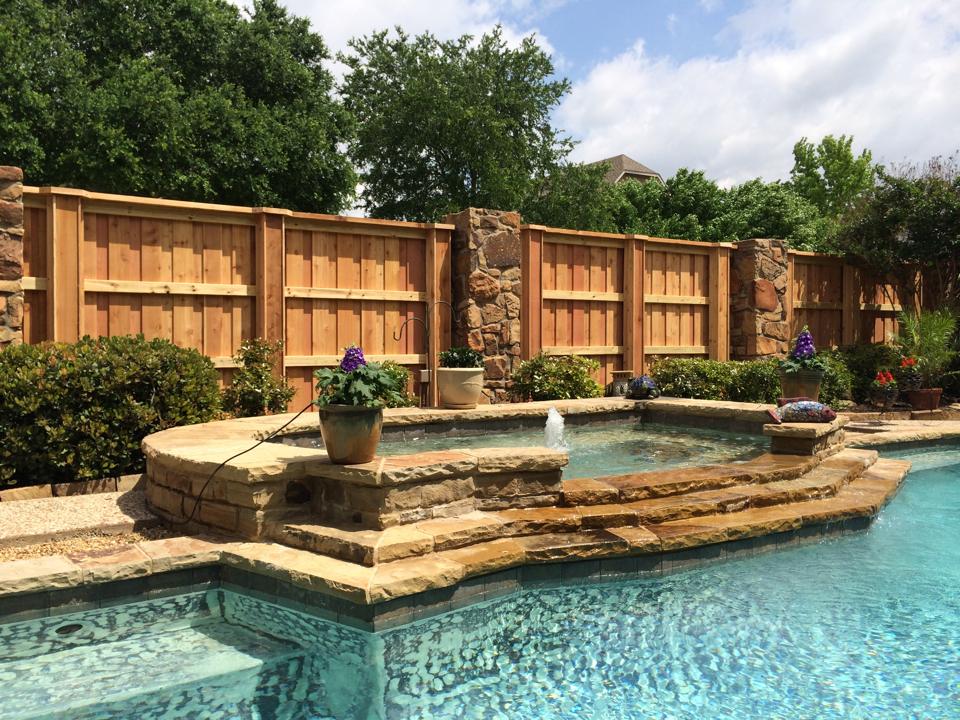Treated Rails vs. Cedar Info – Hancock Fence
As you receive your estimates, many of our competitors will tell you that the pressure treated rails we use on our Signature Series Fences are bad. We here to tell you otherwise, and we will show you why.
“RAILS” are the horizontal boards that make up the framework of a fence. We call it “The Skeleton”.
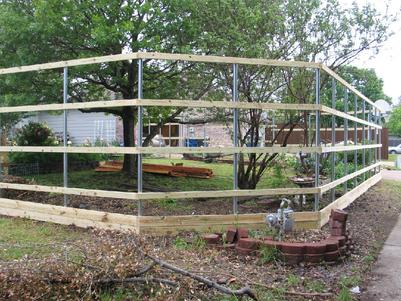
Our competition says:
“Treated rails are cheap. They will warp and twist causing you problems and the cedar rails that they offer will not”.
This statement simply is not true…
The “cheap” part is somewhat correct. A better description would be “costs a little less than cedar”, which is true. Treated rails are not “cheap,” they simply cost less than cedar.
Warping and twisting on Hancock Fences are avoided by several important steps:
- We order only select quality, kiln dried, MCQ treated rails. We do not use sopping wet, green #2 treated lumber commonly found at lumberyards. Kiln dried lumber is much more stable and dependable than wet lumber. It’s harder to find, and also costs more.
- We space our posts closer together to reduce the spanned distance between panels.
- Our gates are steel framed & reinforced to prevent any warping or sagging problems in the gate area. Don’t get us wrong…. We are not saying cedar rails are not good, because they are. In fact, they are a very good choice
But……
Here is what our competition won’t tell you about their cedar rails:
Cedar rails will eventually rot and you will be replacing the fence again. Yes, 15 years down the road or so, but it will happen. Cedar rails, pickets, and trim, could rot and all are susceptible to termite infestation.
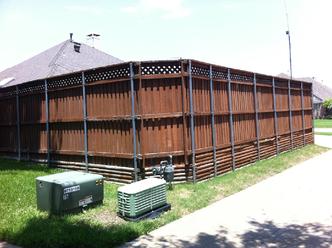
Lets cover ROTTEN CEDAR RAILS first:
Here is a fence we recently replaced. It was built by one of Collin County’s top builders. They used expensive, top quality, 2X4 rough cedar rails to build this fence and they did a nice job.
It doesn’t look too bad…. right??
Look Much Closer….
The only reason for replacing this fence is because the cedar rails are rotten and the fence is falling apart. The skeleton of the fence is collapsing and the fence cannot be repaired because the fasteners have nothing to bite into. This replacement could have been easily avoided if treated rails were used in the first place.
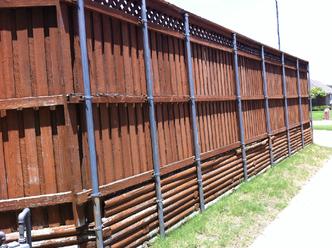
As you can see, the owner did apply stain & sealer in the past, and at least tried to take reasonable care of the fence. Some may try to blame this on “sprinkler damage” or over watering. As you can see the rails are far away from the ground and there are no sprinkler “rainbows” showing.
(bleached arches from the chlorine in the water)
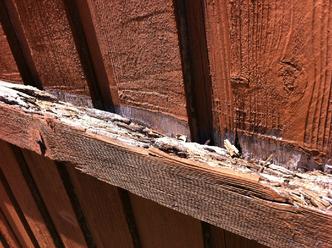
You can see the stain line above the rail. There is 3/4 of an inch that is completely gone in this area.
The most absorbent part of cedar are the ends of the board. This is always where rot and decay begin first. This is also where you will find the fasteners attached that hold the rails to the posts. The cedar becomes soft, begins to rot, the screws lose their bite and the fence starts falling apart. It’s that simple.
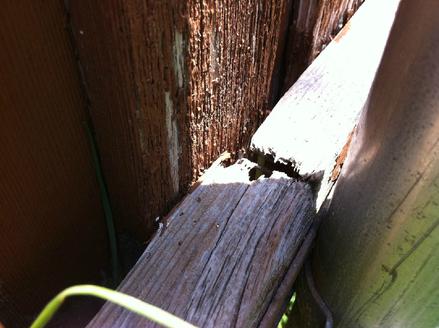
Even the treated landscape timbers were rotten on the ends. Landscape timbers are treated by “dipping” and not pressure treatment. Therefore the surface is treated, the core is not. Landscape timbers rot from the inside out.
Ok….. I think you get the point by now, lets switch gears and talk TERMITES!
The video below shows an old Amstar Fence we recently ran across. Our guess is that its about 12 to 15 years old. Amstar used to also recommend and use cedar rails. This fence has never been stained or sealed. It is still straight as an arrow and looks great except for one thing……. TERMITES in the rails!
This is no fault of Amstar’s but after cedar ages and loses it’s natural insect resistance and aromatic qualities, it becomes fair game for termites. It’s a darn shame because this fence is still in great shape despite the fact the the owner never took care of it. The termites will eat the rails and like wood rot, the fence will begin to fall apart.
This is exactly why Hancock Fence uses treated lumber for our skeletons!
It’s not a cost saving, corner cutting, cheap way out. We want our fences to last as long as possible and this is what we have to do.
Our select, kiln dried, pressure treated rails will not rot and termites HATE the way they taste.
Termites will move to your neighbors fence and eat it instead!! :-))
Most Hancock Fence customers are eager to stain & seal their fence every 3-4 years or so and take reasonable care of it. For those of you who don’t…. we have you covered too! With the use of steel posts, galvanized hardware, aluminum nails, and pressure treated framework, the skeleton should stay fully intact even when totally neglected.
20 years down the road, if a few pickets need to be replaced, it will be an easy DIY job because the rails will still be there… fully intact.
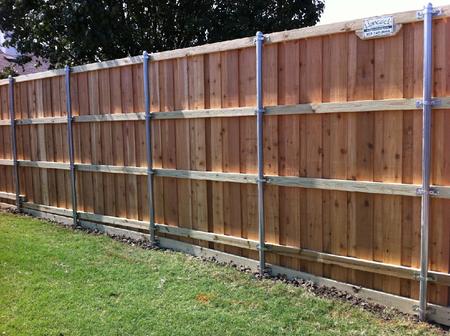
Closing Quick Facts…
- Pressure treated lumber lasts much longer than cedar under all circumstances.
- Warping & twisting is not a problem under the right circumstances.
- All lumber used outdoors will eventually develop cracks from expansion and contraction.
- Cedar Rails are more expensive than Treated Rails.
- Cedar rails are more corrosive to steel fasteners than MCQ treated lumber.
- Cedar will ROT, Treated does NOT !!
Thank you for reading this far. I hope this information was helpful to you!!
